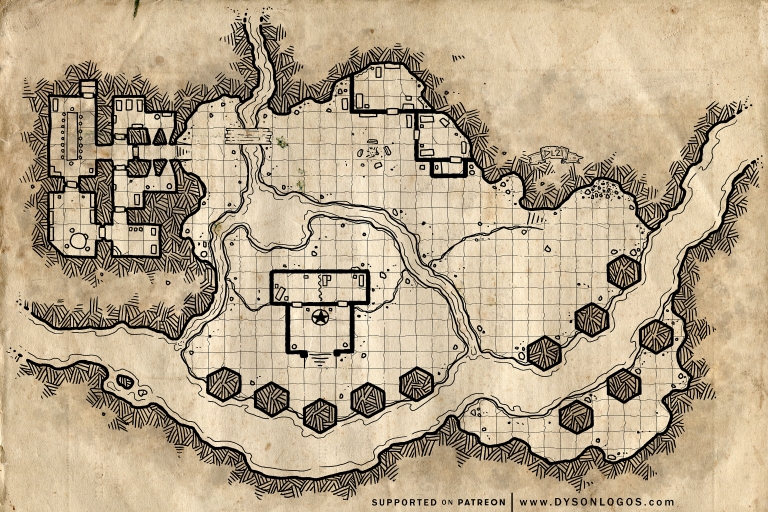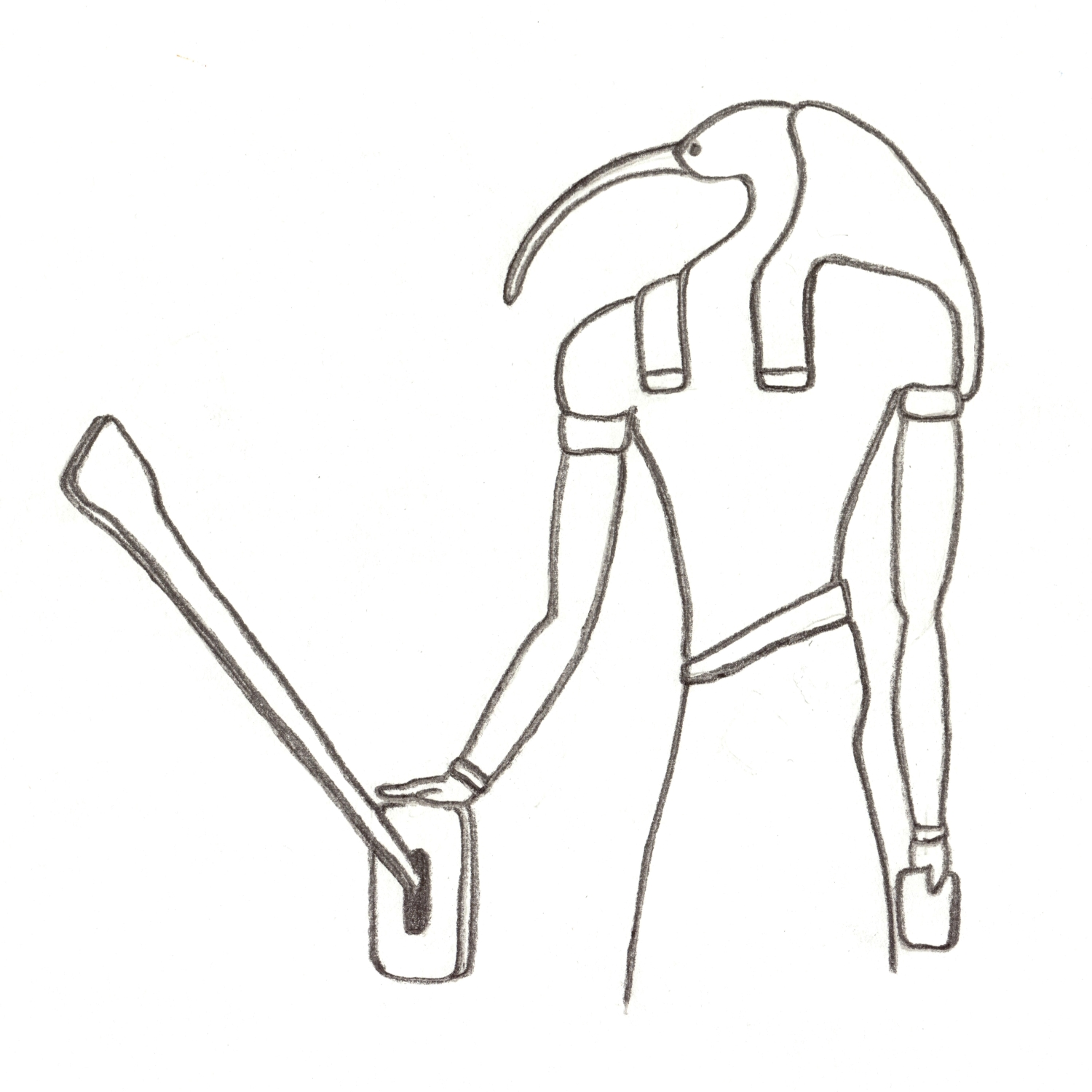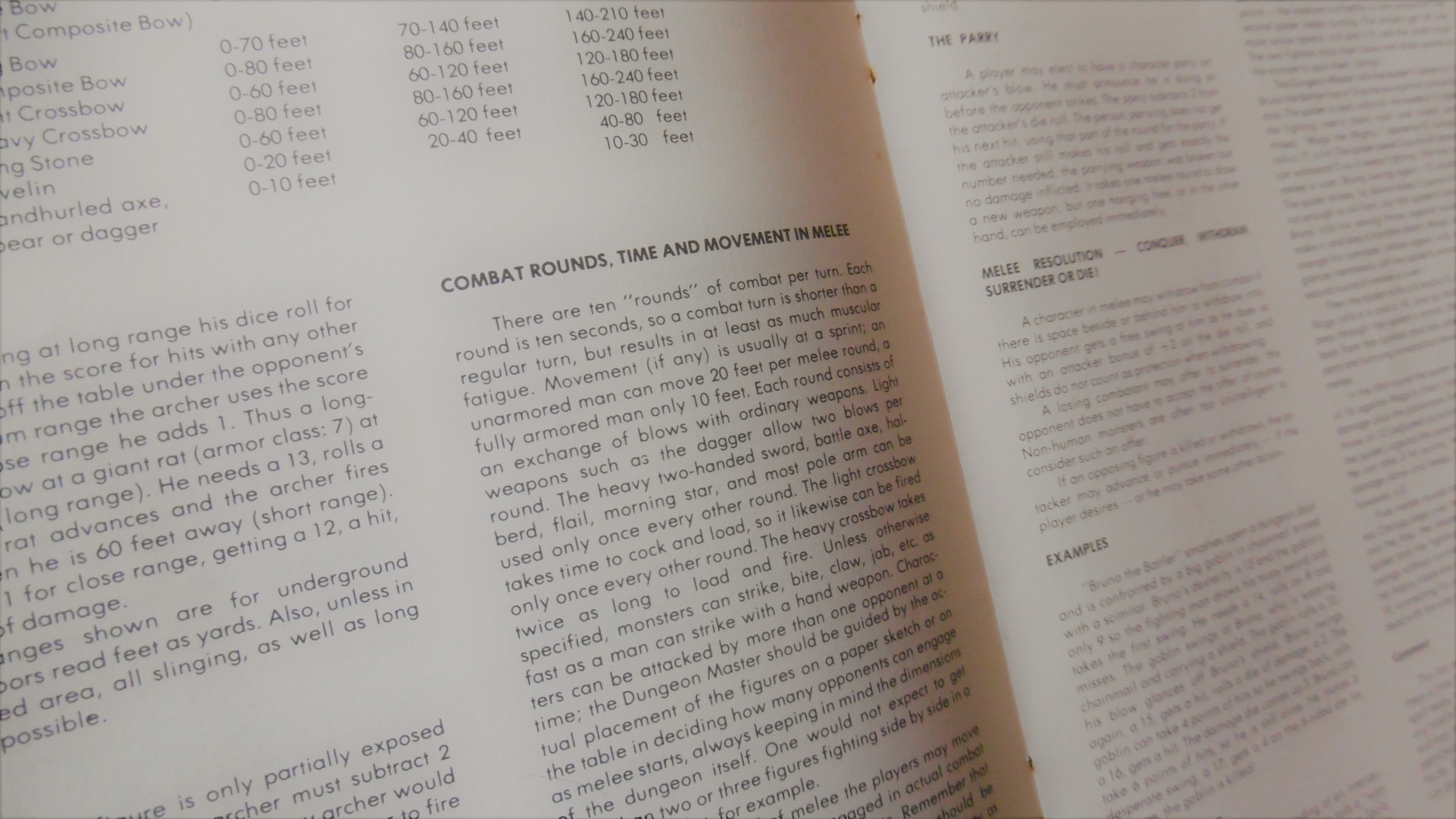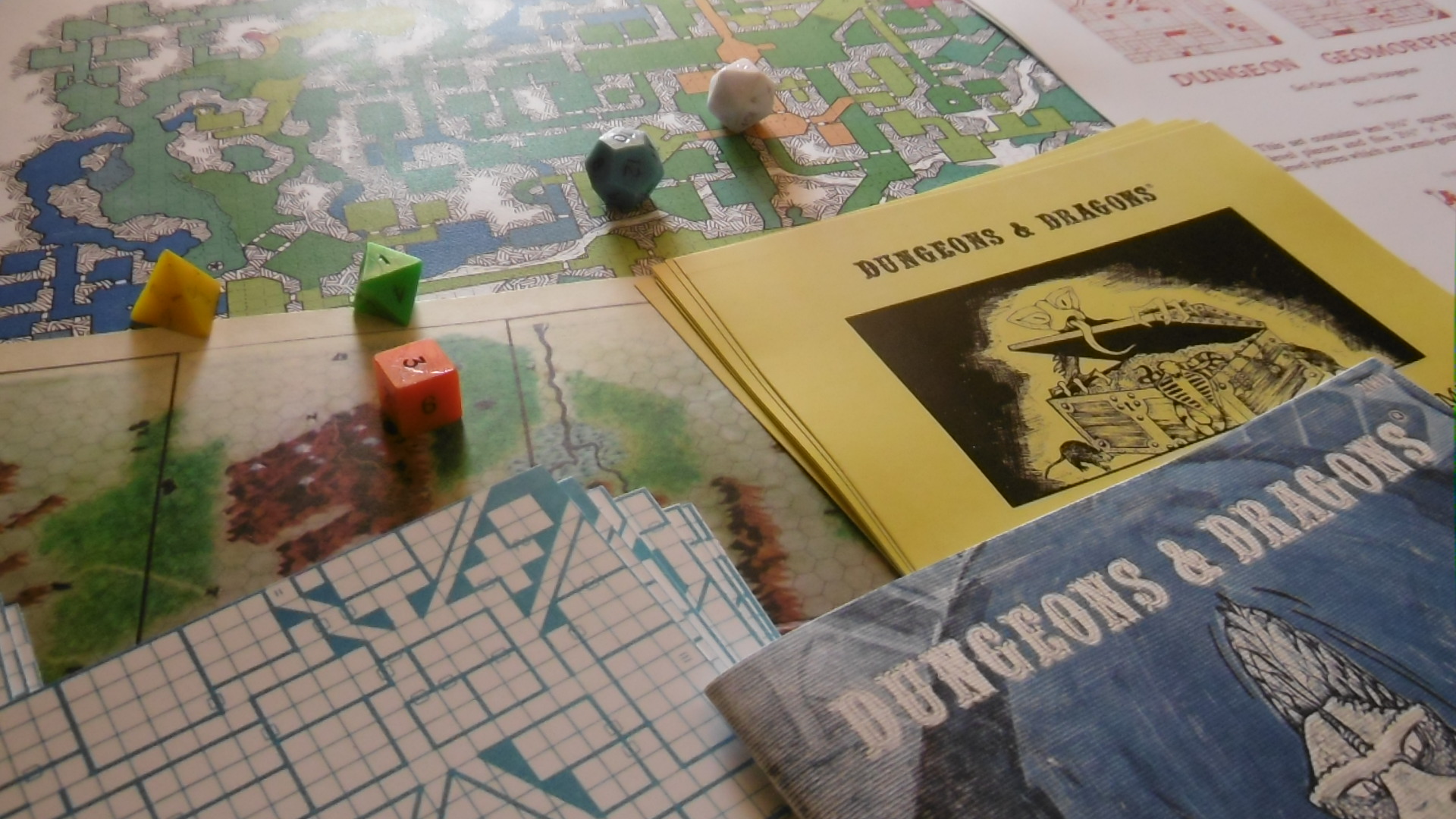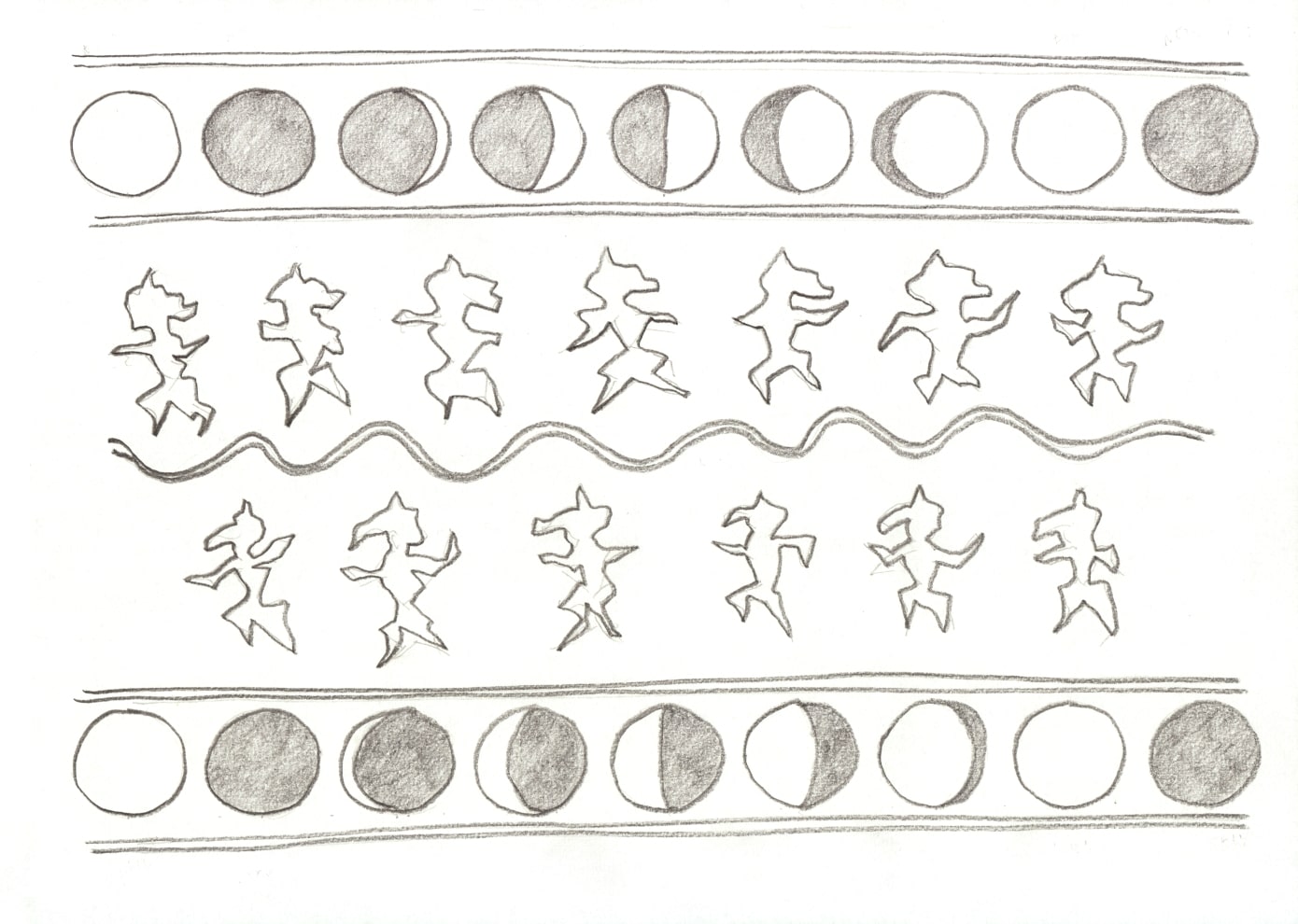Maneuver, Initiative Order, and Multiple Attacks
By neglecting some rules in “Rules the Pandemonium Society Doesn’t Use,” Phenster obliges us to clarify. He also adds a house rule for acting later in a melee round. To all that, I add multiple attacks per round, suggested by a L’avant garde reader in response to Phenster’s earlier article.
Each house rule is followed by a category designator in parenthesis. See “About the Reedition of Phenster’s” for category descriptions. Text under headers sans designator is just me talking.
A Word About Figurines
Holmes mentions the use of figurines, claiming, “The game is more exciting and spectacular using the lead miniature figures” (5). Many gaming groups of the ’70s and ’80s had and used figurines at the table. I suspect the majority did not employ them in combat in the meticulous manner assumed by some later D&D editions.
My experience with figurines in the ’80s and ’90s, other than admiring the paintwork, was limited to their use to designate order of march and the occasional table arrangement to show the more complicated battle arrays. Even in this later case, we didn’t often use figures to represent monsters. Too many monsters, not enough cash. We just said, “The [monster] is over here,” sometimes placing dice or a soda can.
Phenster never mentions figurines in relation to combat. In the reedition, I intend to keep the rules light enough that one is not forced to break out the miniatures.
For example, in the following rule for maneuver, I avoid delimiting a certain distance a character can move in combat and eschew terms like “square.” I prefer the Holmes term “space,” which leaves the theater free of any grid.
You may, of course, employ figurines, or not and to any degree, as you please.
Maneuver [E]
While engaged in melee, a combatant may move into any open space behind or beside. If the combatant turns their back on the opponent or is otherwise distracted, the opponent gets a free attack, as if the combatant were fleeing. (See Holmes, 21.) This movement occurs after the melee round with any other movement (see Holmes, 20).
Disengagement
When using the maneuver rule, ignore the suggestion, under Caveat in “Weapon Damage and Attack Priority,” to use the parry rule (Holmes, 21) to disengage. With the maneuver rule, disengagement is simpler. If an engaged combatant steps away from the opponent, the opponent may follow at the same time. In this case, disengagement does not occur. If the opponent does not follow, disengagement occurs.
According to Attack Priority by Weapon Quality [E], without the necessity to parry, a character armed with a long weapon may step back from an opponent, and, assuming the opponent does not follow—to avoid being flanked by another enemy, for instance—the character may strike the first blow in the next round, while the opponent cannot return the blow, unless it is also armed with a long weapon. The character may remain in position on subsequent rounds, getting the first blow without the chance to be attacked. This is essentially what Phenster calls a “phalanx,” which he covers later.
“Withdraw” or Retreat
Holmes’s description of withdrawing from melee (21) implies the character’s back is to the enemy. Suffering a “free swing” at +2 and not counting shield seems more like a retreat. Using maneuver, if a combatant moves back a space, and the opponent does not follow, the combatant may, in the next round, turn tail and run without consequence.
Drop Items on Surprise [E]
Ignore the rule that says a surprised character drops any items in hand (Holmes, 10).
One-sixth of ⅓ is about 5%. Before arguing about whether the chance is too high or too low, we drop the rule because an extra dice roll per character, including entourage, every time the party is surprised (2 out of 6) is too much for what it gives the game.
I put this one in the [E] Extra category. Holmes straight up, I use the rule as written. It’s unique to Bluebook D&D.
Initiative Order
The following rules assume the use of the initiative-by-Dexterity system in Holmes. In that system, a normal round starts at 18 and counts down to 3, where combatants act on the “count” equal to their Dexterity score.
Simultaneous Combat [E]
Ignore the instruction to dice for first blow when two opponents have similar Dexterity scores (Holmes, 21). If opponents act on the same count, the actions are simultaneous. The success or failure of all simultaneous actions are determined before results, usually damage, are applied.
Hold Action [E]
A character may wait to take their action on a later count in the initiative order. An action might be held so as to work in conjunction with another’s action or to interrupt it. Holding one’s action changes the character’s initiative count in subsequent rounds to that on which they act in the current round.
To hold an action, the player states their intention on their normal initiative count. The character then takes the action when the situation matches the intention. The player may, at any time, change their mind and take some other action. An action not used may be executed at the end of the round or held until the next round.
Multiple Attacks per Round [E]
Referring to weapon classes in “Weapon Damage and Attack Priority,” a combatant wielding a weapon two classes lighter than that of the opponent gets two attacks per round. Three classes lighter, three attacks.
No matter the difference in weapon class, combatants are still limited to one attack per phase: beginning, middle, end. (See heading Go First, Go Last in “Weapon Damage and Attack Priority.”) Usually, the last of two or three attacks is taken at the end of the round; the second of three is taken in the middle. The usual case may change, for instance, when the combatant holds an attack. If not using those phases, the DM may adjudicate whether the combatant can get in all attacks.
A combatant gets only one attack per round when closing to melee or in any round after moving, not including maneuvering.
With a weapon of a heavier, same, or one class lighter than the opponent’s weapon, a combatant gets just one attack per round.
